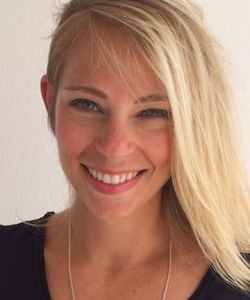Abstract
Hydrogen (H2) produced from natural radioactive splitting of water (water radiolysis) may be a significant electron donor for microbes in organic-poor sediment, such as the sediment of open ocean gyres. The importance of this process on a global scale is unknown. Consequently, I propose to model radiolytic H2 production in multiple types of subseafloor sediment at multiple locations and create global maps of production for different sediment depths. I will use a compilation of shipboard data from numerous Ocean Drilling Program (ODP) and Integrated Ocean Drilling Program (IODP) expeditions, as well as new physical property and chemical data that I will generate. Once the maps are created, I will use them to calculate the global subseafloor production of radiolytic hydrogen and to quantitatively estimate how much subseafloor sedimentary life may be supported by terrestrial nuclear energy.
Biography
The natural environment has always fascinated me. After finishing a master’s degree in earth system sciences at the Free University Brussels, with a focus on terrestrial ecosystems and climate change, I decided to expand my playground by entering a Ph.D. program to study one of earth’s largest and least understood ecosystems: the deep subseafloor. With the guidance of my adviser Dr. Steven D’Hondt at the University of Rhode Island, I’m currently investigating the extent to which hydrogen from splitting of water by natural radioactivity can support microbial communities in subseafloor sediment. My project combines the geological, chemical, and biological sciences, continuously challenges my ideas of evolution and the limits of life, and has important implications for life on other planets. My graduate work has provided me with exciting opportunities, including participation as a shipboard scientist on IODP Expedition 337, and now this Schlanger Ocean Drilling Fellowship, which will allow me to quantify global distributions of radiolytic hydrogen production.







